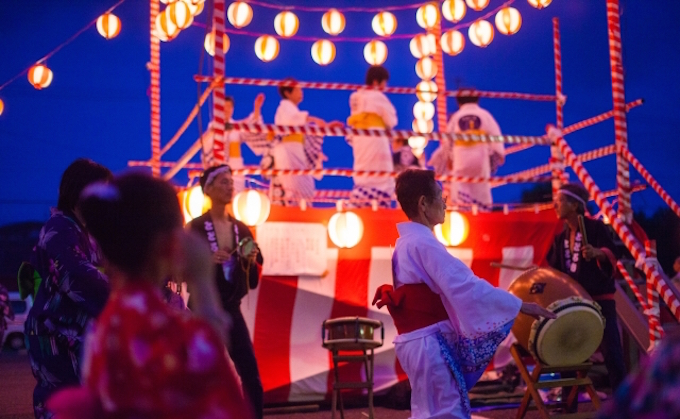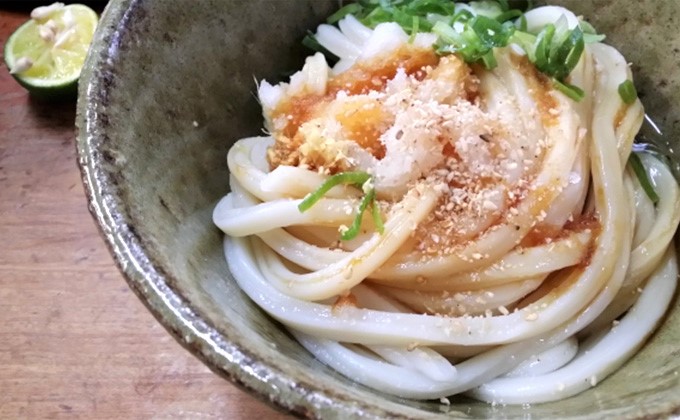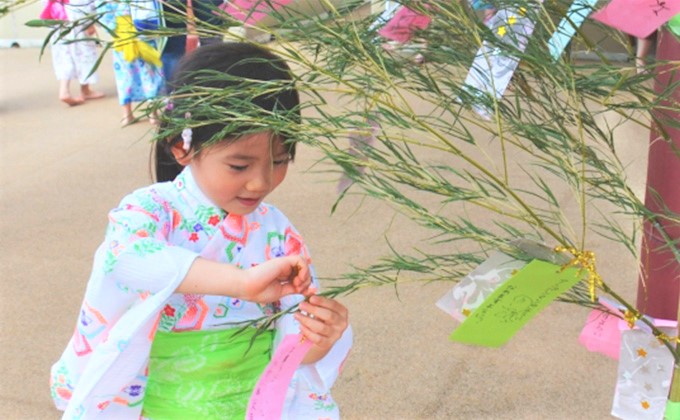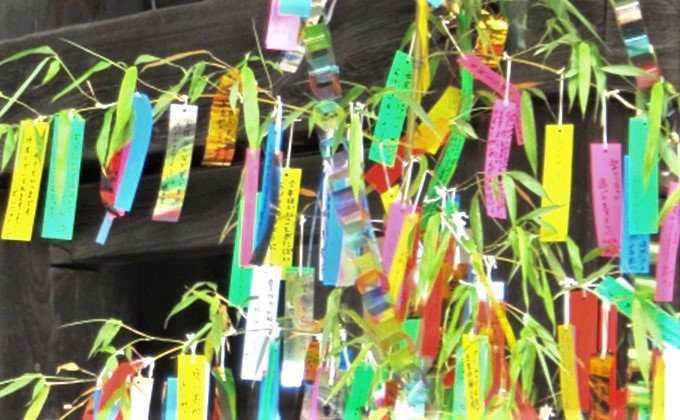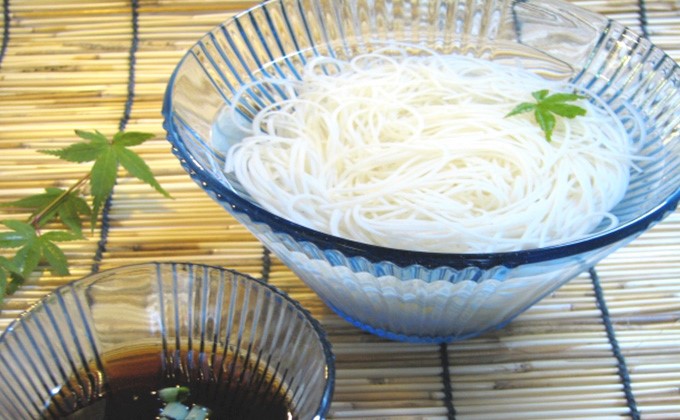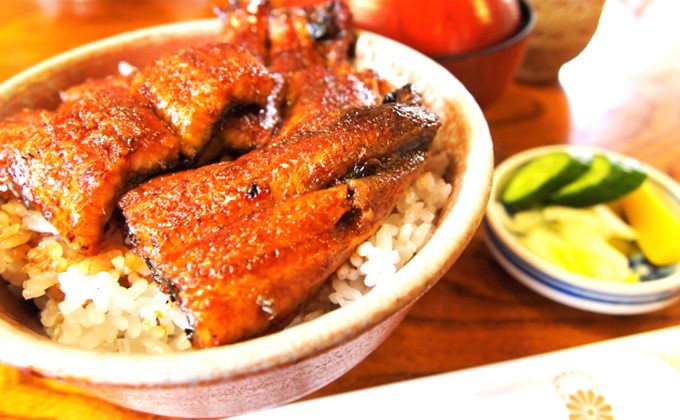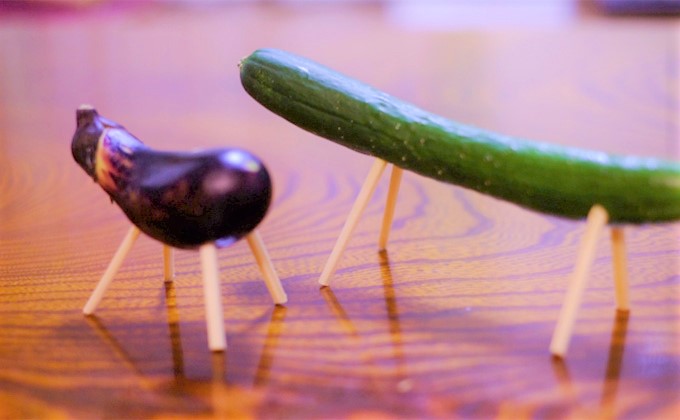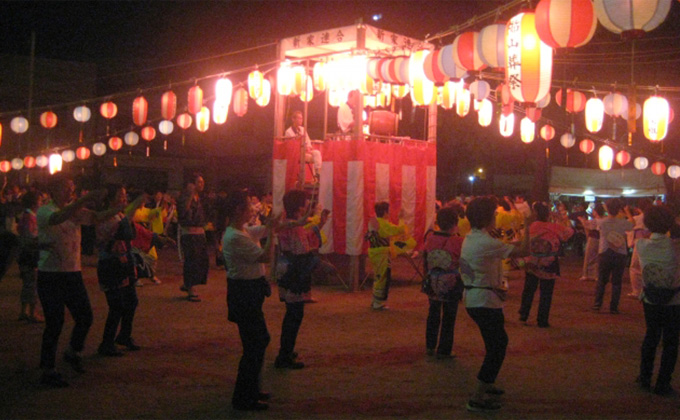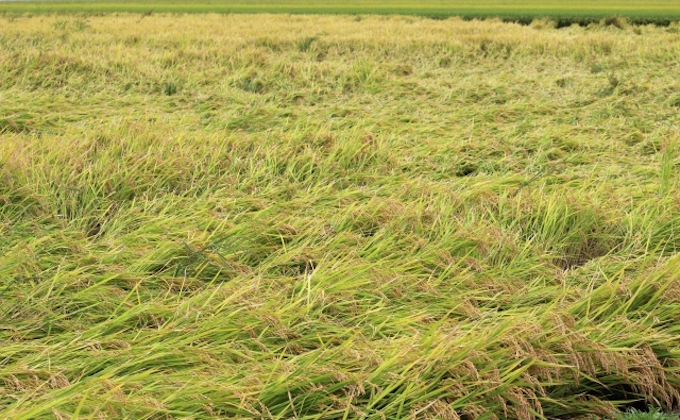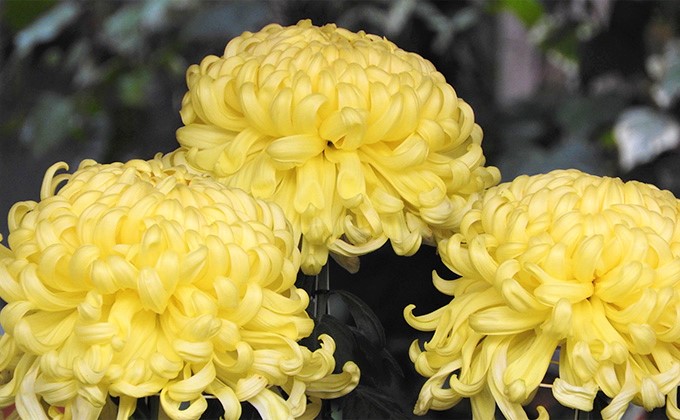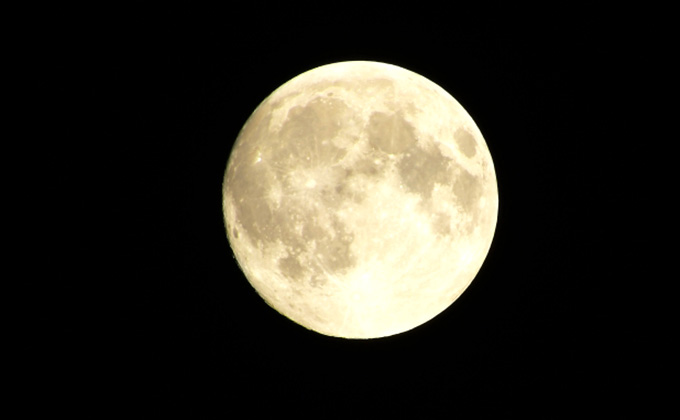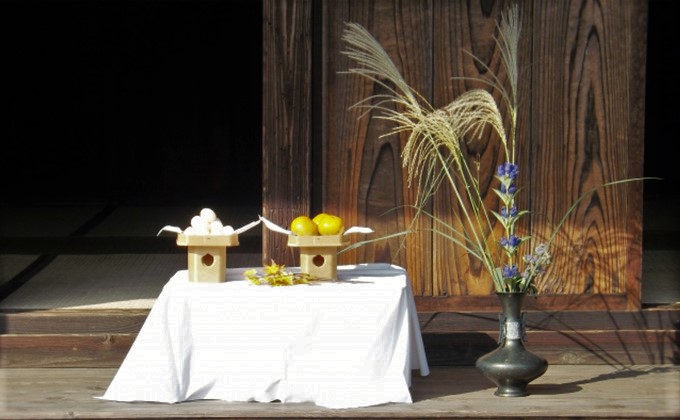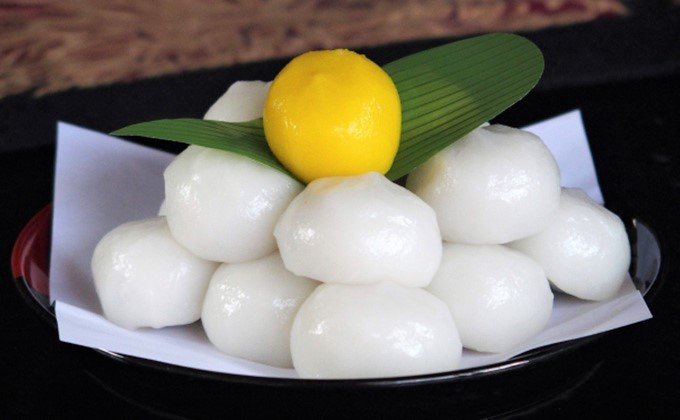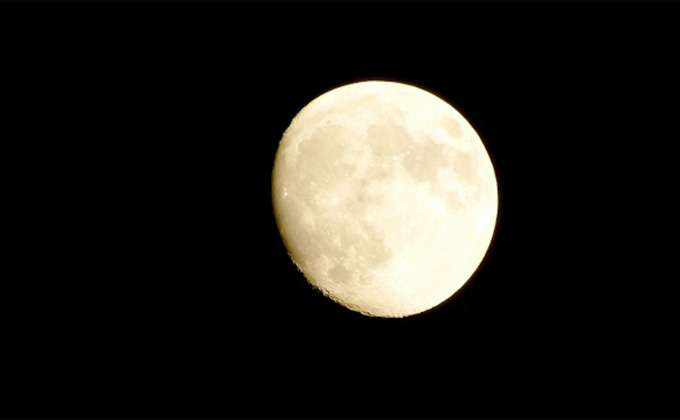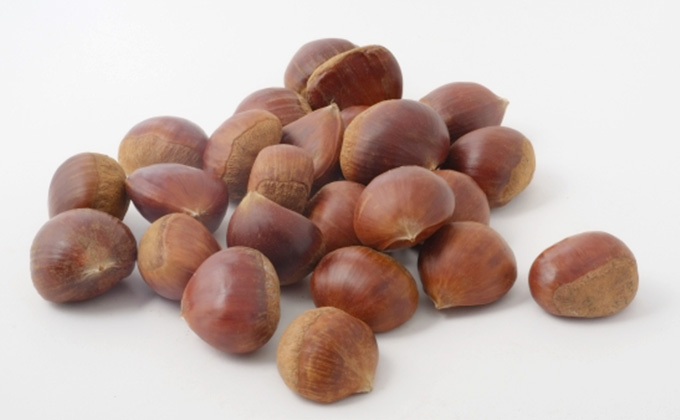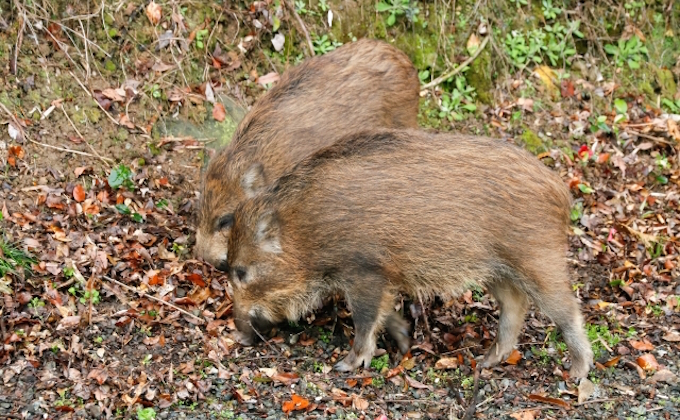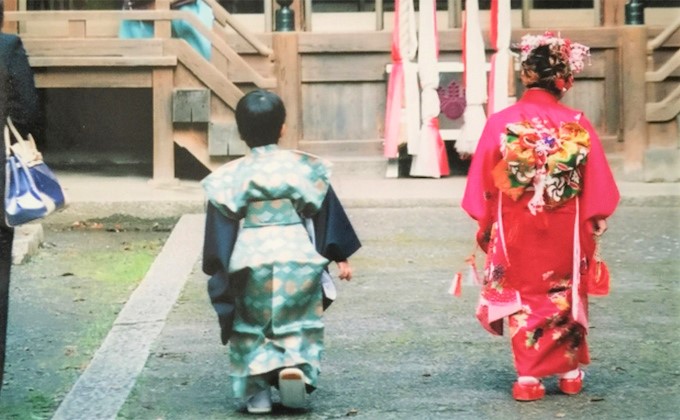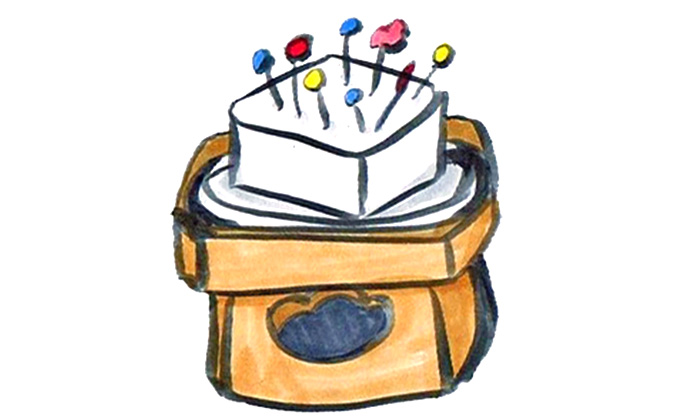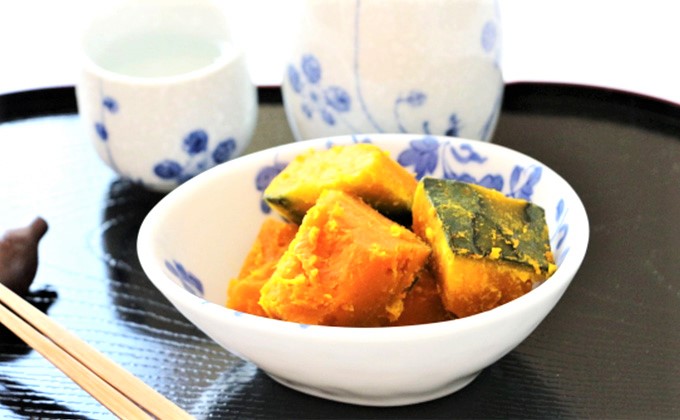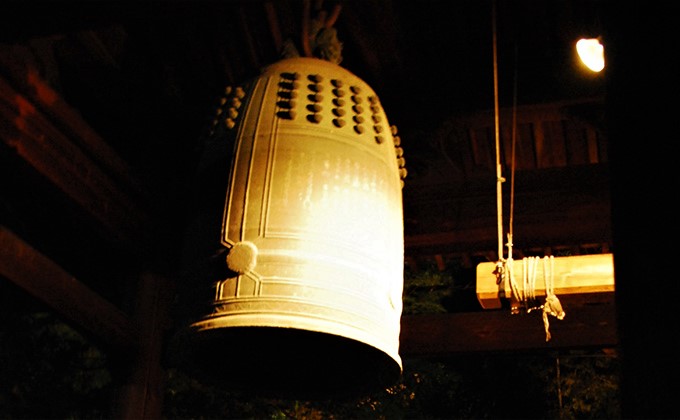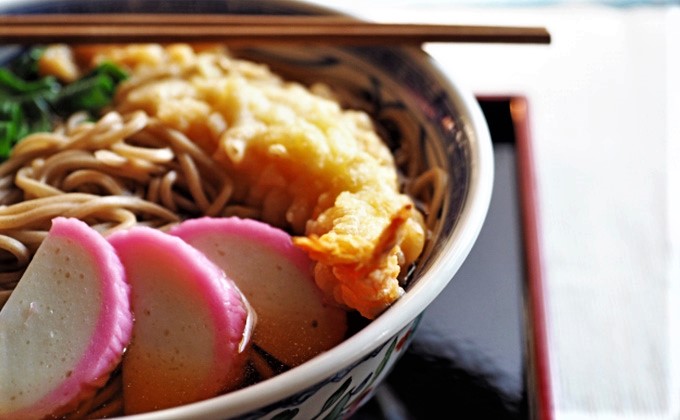TRG Info and Advice
Annual Events and Folklore Customs in Japan Part 2
July
Around the 2nd of July: Hangesho
Hangesho is one of the seventy-two seasonal pentads, which indicates the period of time when a medicinal herb called Hange (crowdipper) sprouts. Hangesho marks the end of rice planting, and farmers take a break on this day. The rainfall on Hangesho is called “Hange-ame,” and it sometimes falls in downpours. Farmers would often divine the future crop judging from the day’s weather. People in the Kansai area traditionally eat octopus on Hangesho, imaging crops sending out deep roots like octopus tentacles. Serving udon noodles in order to thank people who helped with planting, and also wheat harvesting, used to be the norm in Kagawa Prefecture.
7th of July: Tanabata (Star Festival)
Tanabata, also called “Star Festival,” is the time when Orihime or Shokujo (the weaving woman) and Hikoboshi or Kengyu (the cowherd) meet up across the Milky Way (in Japanese, amanogawa: river in heaven). It is celebrated by writing on colorful rectangular pieces of paper, and hanging them on bamboo leaves, in order to make a wish to Orihime, for improved skillfulness.
Nobody knows for sure how this festival started, but one theory claims that it is a combination of a Japanese ritual called “tanabata” (a type of loom), the Chinese legend of Vega and Altair, and a Chinese event called Kikkoden. Kikkoden is an event to pray for progress in the arts, while looking up at the star of Orihime: Vega. In Japan, there used to be an event where shrine maidens called “tanabatatsume” (women of the looms) stayed by the waterside and waited for gods to come down on the seventh of July every year. In the past, sakubei (wheat and rice flour kneaded, made into thin rope shapes, twisted and deep-fried) was consumed on Tanabata Day. It is said that sakubei protects you from illnesses and that it is the origin of somen (thin noodles).
On a separate note, there is a distance of about 14.4 light-years (136 trillion kilometers!) between Vega and Altair, which would take 14 years to travel, even when moving as fast as the light. Therefore, it is probably difficult for them to meet even once a year, unfortunately.
Around 20th of July: Doyo no Ushi
Nowadays, Doyo specifically indicates the day in summer before Risshu (Beginning of Autumn), but there are actually four Doyo periods a year, eighteen days before each of the seasonal eves: Risshun, Rikka (Beginning of Summer), Risshu, and Ritto (Beginning of Winter). Animal signs are applied to each day, too, and the Ox day in the Doyo period is called Doyo no Ushi (ox). In order to provide energy and alleviate suffering in the sweltering hot days of summer, something energizing, such as unagi eels, shijimi (freshwater clams), rice cakes, eggs, and others, were eaten on this day, and that has become the norm.
August
15th of August: Obon (Obon of one month later)
Obon is the time when the spirits of ancestors return home and are seen off. Many people take summer holidays around this time. They return to their families, and visit ancestors’ graves. Wooden chopsticks are stuck in aubergines and cucumbers as legs, imitating horses and cows respectively, and displayed in front of the Buddhist altar, because the dead’s spirits come home riding on them. It is said that the people waiting for the ancestors want them to come quickly by horse and leave slowly on the cow. People dance bon-odori at festivals, which used to be carried out for the purpose of commemorating the dead who came back home and sending them off again. There is a long established event called “Shoryo Nagashi” (spirit boat procession) in Nagasaki, where handmade wooden boats carrying the spirits of the dead are paraded through towns for souls of recently departed family members. In Kyoto, on the 16th of August, Gozan no Okuribi, five giant bonfires, take place to see off the spirits of deceased ancestors.
September
Around 1st of September: Nihyakutoka
One of Zassetsu, Nihyakutoka is the 210th day starting from Risshun, when many typhoons approach Japan. Just before rice harvesting, this time of the year was noted on the calendar as a day to beware of typhoons.
9th of September: Choyo no Sekku
The Chinese theory of Yin-and-Yang deems odd numbers as the auspicious ones of Yang, and the 9th of September was greatly celebrated because the day contains two nines, which is the biggest odd number under ten. It was believed that chrysanthemums drive out evil spirits and work effectively for longevity, and, so, the flowers were thus displayed and chrysanthemum alcohol was consumed with petals afloat on the surface so that the aroma is defused. This is why Choyo no Sekku is also called Kiku no Sekku, The Chrysanthemum Festival. Some people put cotton over chrysanthemum flowers overnight so that the cotton absorbs the dew, and then wipe their bodies with it. This is called kisewata (covering cotton), and was believed to work as a rejuvenation treatment. Some people pick and dry the chrysanthemum flowers picked on the day to make a “chrysanthemum pillow.” It protects against evil spirits and helps with insomnia and headaches. It is also believed that if you sleep using the chrysanthemum pillow, you can dream of your loved one. As this time of the year coincides with harvest, Choyo no Sekku is also called “Kuri no Sekku (chestnut festival), which used to be celebrated with kurigohan (rice cooked with chestnut) in gratitude for the harvest. This festival was almost lost recently, but in Nagasaki and Karatsu, Saga, festivals of the ninth day called “Kunchi” are widely held to celebrate the harvest.
15th of August: Jugoya (fifteenth night)
Although the moon on the 15th day is always a full moon on the old calendar, Jugoya specifically indicates the 15th of August on the old calendar: Chushu no Meigetsu (harvest moon). People often say: “The moon (tsuki) to view is the moon of this month (tsuki),” and longed for this moon. The moon hidden behind clouds on Jugoya was called “Muzuki (no moon),” and if the rain falls, the moon behind rain clouds was called “Uzuki (rain moon).” This time of year is about the time to harvest taro, and this moon was also known as “Imomeigetsu (potato harvest moon).” Therefore, taro and ears of silver grass are traditionally displayed in order to thank bountiful crops. Nowadays, dango dumplings imitating taro are displayed instead. Depending on regions, children are allowed to sneak away the offerings. This is a custom called “Otsukimi Dorobo” (moon viewing thief).
October
13th of October: Jusanya
Jusanya means the thirteenth night in Japanese. The moon seen on this day is called “Nochi no tsuki” (late moon) and is appreciated much like the harvest moon (Chushu no Meigetsu) in September. Harvest moon viewing comes from a Chinese tradition, but this Ato no Tsuki viewing is a custom unique to Japan. The “later moon” is not a full moon, but is on its way to becoming full. This moon is also called “Kuri Meigetsu” or “Mame Meigetsu,” because chestnuts and beans are harvested around this time of year. The moon viewed on Jugoya and the moon viewed on Jusanya, combined, are called “the moons of two nights.” The moon must be viewed from the same place on each night. In order to qualify as “the moons of two nights,” the moon must be viewed on both of the days (Jugoya and Jusanya), not just one. Failing to view the moon from the same place, or viewing it on just one of the days, is strongly discouraged.
November
Inoko Iwai (wild boar piglet celebration)
Originally one of the annual events held in imperial households, Inoko Iwai is a traditional event, passed down over generations, mainly in farming villages around West Japan, where the end of rice harvesting is celebrated. As wild boar are prolific, inoko-mochi were prepared using seven kinds of the first grain harvest, including soybeans, red beans and sesame, and consumed to pray for health. In addition to this custom, an event called “Inoko-zuki” (wild boar piglet poking), where children slap the ground with a bundle of straw and go around the neighbourhood, takes place in some places.
15th of November: Shichi-go-san
Shichi-go-san (seven, five, three) is an event for boys at the ages of three and five, and for girls at the ages of three and seven, to celebrate their growth and cultural milestones. Children clad in gala dress (kimono) pay a visit to their tutelary shrine with their families. This Shichi-go-san event is derived from three long-established ceremonies: one is Kamioki, where children start growing their hair in the style appropriate for their gender; another is Hakamagi, where five-year-old boys wear hakama trousers for the first time; and the other is Obitoki, where seven-year-old girls start to wear an obi like an adult, the elaborate sash for a kimono. There are several theories as to why all of these events take place as one “Shichi-go-san” on the 15th of November. One theory claims that is because the 15th of November is the most auspicious day, according to Yin-and-Yang theory, while another claims that is because Tokumatsu, son of the fifth Shogun Tsunayoshi Tokugawa, was celebrated on this day.
December
8th of December: Hari Kuyo (needle memorial service)
Hari Kuyo is the day when you refrain from needlework and have a rest, and hold a memorial service for broken or worn-out needles. Needles that worked hard are stuck into something soft such as konnyaku (devil’s tongue) and tofu, and are dedicated to shrines or temples in order to thank and honour them, and to pray for the improvement of sewing skills. Hari Kuyo is no longer very common as fewer people do needwork at home today, but this memorial service still continues among people at fashion schools or those who are involved in the fashion industry. Hari kuyo takes place on the 8th of December or the 8th of February depending on the place (in some places on both days), and it occurs on the 8th of February mainly in the East Japan, and on the 8th of December in West Japan.
13th of December: Shogatsu Kotohajime
This day marks the start of preparing for the New Year. In the past, people went to the mountains to cut down bamboo and branches for sakaki decorations, and cleaned up both the inside and outside of the house for purification of the surrounding environment. This clean-up is called “susu-harai” (soot sweeping). Some temples still carry out susu-harai on the 13th of December.
Around the 20th of December: Toji (Winter Solstice)
The sun shines at the lowest angle and the length of the day is the shortest. In Japan, people eat pumpkin (acorn squash) and take a bath of yuzu citrus in order to pray for health in the bitter coldness of the coming winter season.
31st of December: Omisoka (New Year’s Eve)
On Omisoka, people stay up until midnight to welcome in the New Year and the Toshigami (deity of the year). People traditionally eat soba noodles while listening to the sound of the temple bells (Joya no Kane). Soba noodles are consumed so that people can live a long life, like the long, thin soba noodles. Joya no kane means the bells ring on the last night of the year, and they are rung 108 times from the Omisoka night and over into the New Year, so that the 108 worldly desires (kleshas in Buddhism) that human beings supposedly have can vanish.
To return to Part 1 of this article, please click here.






